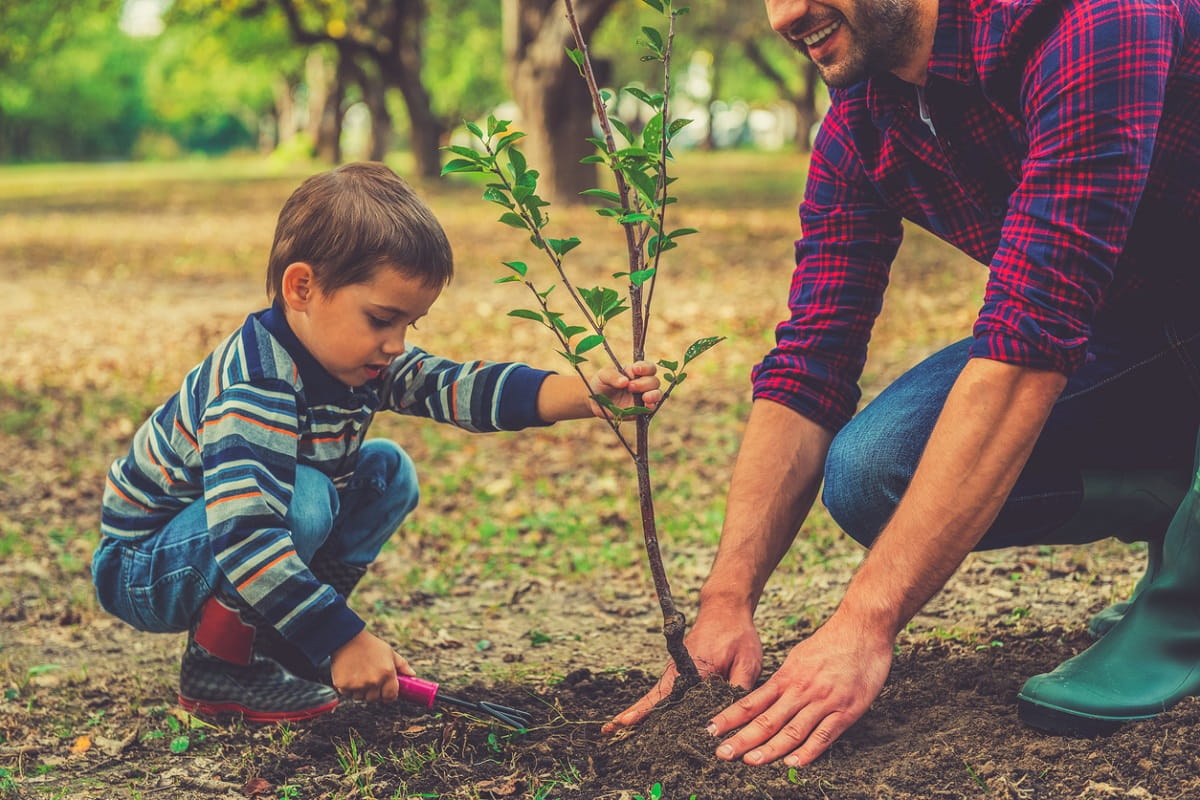A Sapling for Your Little Sapling: Plant a Tree for Arbor Day

Then, as now, it’s up to us to teach children to respect and care for the one earth they’ve got. Arbor Day, with its simple ask that we take an hour or so to plant a tree, is a great time to gently share such lessons.
Luckily, most children love digging and planting and watering. Depending on where you live, you might choose a fruit tree, a native tree, or the official tree of your home state. (Speaking of which, do note that Arbor Day is celebrated at different times in different states, depending on the weather, climate, and temperature. You can find out when your state’s Arbor Day is with this handy Arbor Day map.)
Ready to plant a sapling with your sapling? The Arbor Day foundation recommends these three important steps.
1. Pick your spot.
Even if you’re planting in your own yard, it’s important to make sure you are planting a tree that will fit in the allotted space and thrive in those conditions. Got wires overhead? You don’t want a tree that will grow into them. Planting in a shady or very sunny area? You’ll want to choose a species that thrives with the available light.
2. Pick your tree.
The tree experts of the Arbor Day foundation share these six “tree needs” for every kind of tree—a local nursery can help you choose the right tree according to these needs and the site you’ve chosen with your child.
-
Temperature Needs: America is separated into different “hardiness zones” according to winter temperatures, and you can check hardiness zones by zip code before choosing a tree. Some trees can handle cold weather better than others.
-
Water Needs: If you live in a very rainy or very dry climate, you’ll want to pick a tree that matches the moisture availability of your local ecosystem. You wouldn’t want to plant a tropical tree in the desert!
-
Sunlight Needs: How much sun will your selected spot offer a baby tree? "Shade tolerance" is the term gardeners and foresters use to rank the light requirements of each species of tree.
-
Health Needs: Ask local experts, like park rangers or nursery workers, what kind of insects, pests, or diseases commonly threaten in trees in your area. Let them help you pick a tree that will be able to thrive in the face of pests.
-
Soil Needs: The depth, composition, pH, and water content of the soil can determine whether a tree survives to become a big, beautiful part of your local environment. Each kind of tree has different soil needs—you may want to bring a soil sample to your local nursery to match the right tree to the dirt that will make up its new home.
-
Air Needs: Are there a lot of air pollutants in the area where you’ll be planting? Some trees can clean the air and will be able to survive in more polluted air than other species.
3. Plant your tree!
The Arbor Day Foundation has detailed instructions for planting bare root, containerized, or balled & burlapped trees (all these terms are also explained clearly) to make sure your tree is planted at the right depth and with the right amount of water. Be sure to let your child get a little dirty when you’re putting the tree into the ground. Getting dirty in the soil is great for sensory development, and letting kids get a little messy and muddy can be good for their health! Looking for more kid-friendly Arbor Day activities? Check out our guide to eight things trees can teach your child about science, the seasons, and her every day environment.





